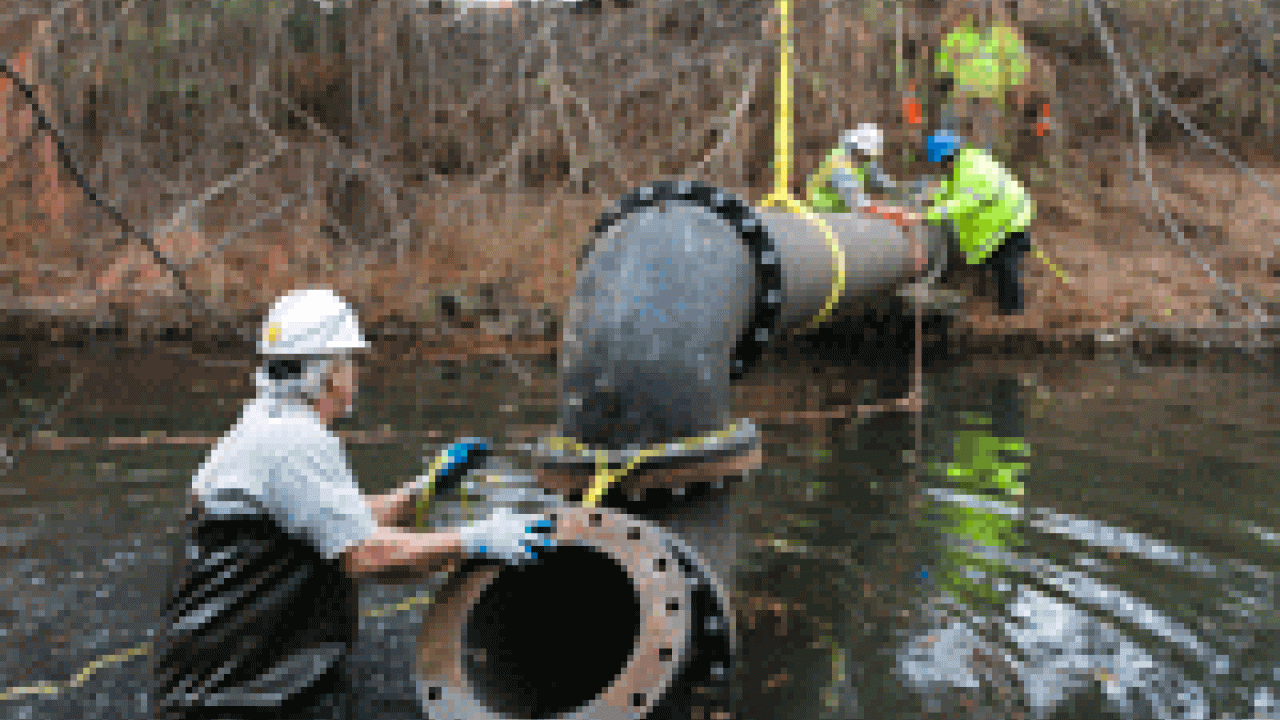The idea surfaced in 1999.
Take the campus's treated wastewater and run it through the arboretum waterway, as a way to establish a current. Otherwise, the waterway mostly sits still — and when the temperature climbs, the stagnant water turns green, and it smells.
The reason is simple: The waterway is not a creek. There is no inflow, other than irrigation and storm runoff. And that is the waterway's utilitarian purpose: It is a storm water retention basin.
But, together with the trees that line its banks, this 1½-mile-long channel at most times of the year is an aesthetically pleasing site for thousands who visit the campus's south entry annually.
Thus the push to keep the water fresh and clean all through the year, an effort that began as far back as Emil Mrak's chancellorship from 1959 to 1969.
Professor Bob Powell, chair of the Department of Chemical Engineering and Materials Science, and incoming chair of the Academic Senate, recalled a time in the 1960s when the university hired an engineering faculty member with expertise in water quality.
A senior faculty member told the new hire "that within a year he would get a call from Emil Mrak asking him what could be done to 'fix' the water in what was then still called Putah Creek. He got the call, and so did generations of others."
Fast forward to Robert Grey's tenure as provost, 1993 to 2001.
"My wife and I walked in the arboretum most every weekend," Grey said by e-mail from UC Riverside, where he is serving as interim chancellor. "The arboretum was becoming increasingly beautiful in every way except for the damned stagnant water that turned green and scummy in the summer.
"Professor Bob Powell was my faculty assistant at the time, and I kept grumbling to him that we, of all campuses, should be able to figure out how to have clear water."
Powell and fellow committee members went to work and put forth their idea to establish inflow into the waterway, using reclaimed water from the campus's then-new wastewater treatment plant south of Interstate 80.
The committee foresaw a moving stream the full length of the arboretum. The waterway would feature different levels, with water spilling over small dams, and maybe even a section where water would meander through a bed of rocks.
But first things first: getting the reclaimed water to the arboretum. To do that, the university relied on a pipe that was already in the ground — a pipe that formerly carried treated wastewater away from campus, when the treatment plant sat along the arboretum.
Using the old pipeline kept the cost down — about $221,000 so far — but it also dictated where the reclaimed water would enter the waterway, at the point where the pipe goes under the arboretum.
That point is near the foot of Putah Creek Lodge Road, and the reclaimed water flows west from there. Thus, the new circulation skips the eastern two-thirds of the waterway, including the parts of the channel that run through the redwood grove and Lake Spafford.
Still, partial improvement is better than none at all, said arboretum Director Kathleen Socolofsky, who noted that arboretum visitors cite the water quality of the waterway as a top concern.
She acknowledged disappointment over the unexpectedly early algae bloom that shut down the pipeline, but expressed confidence in the campus's "creative problem-solvers."
David Phillips, interim director of Utility Services, said he aims to get it right, and he said he is optimistic that one day he can deliver fresh and clean water all along the waterway.
That would require a new pipeline to the waterway's east end near downtown Davis. This endeavor might not be as expensive as it sounds, Phillips said.
The project team is exploring the idea of installing plastic pipe along the bottom of the waterway. The pipe could be floated in place during construction, eliminating the need for heavy equipment or digging within the arboretum. The pipe would then sink to the bottom when filled with water.
Socolofsky commended former Provost Grey and his successor, Virginia Hinshaw, for advancing the initial project, and campus staff for making it happen.
In an e-mail from Hawaii, where she is now chancellor of the University of Hawaii-Manoa, Hinshaw recalled the waterway's worst days when people call it "Putrid Creek," a takeoff on Putah Creek — the channel's name before the townspeople of Davis diverted the flood-prone creek to the south in the late 19th century.
Hinshaw and Grey both were ecstatic upon learning the waterway improvement project had finally become operational.
And both reacted the exact same way when they learned the project had hit a snag: "Bummer!" each of them said by e-mail, without knowing what the other had said.
Media Resources
Clifton B. Parker, Dateline, (530) 752-1932, cparker@ucdavis.edu
